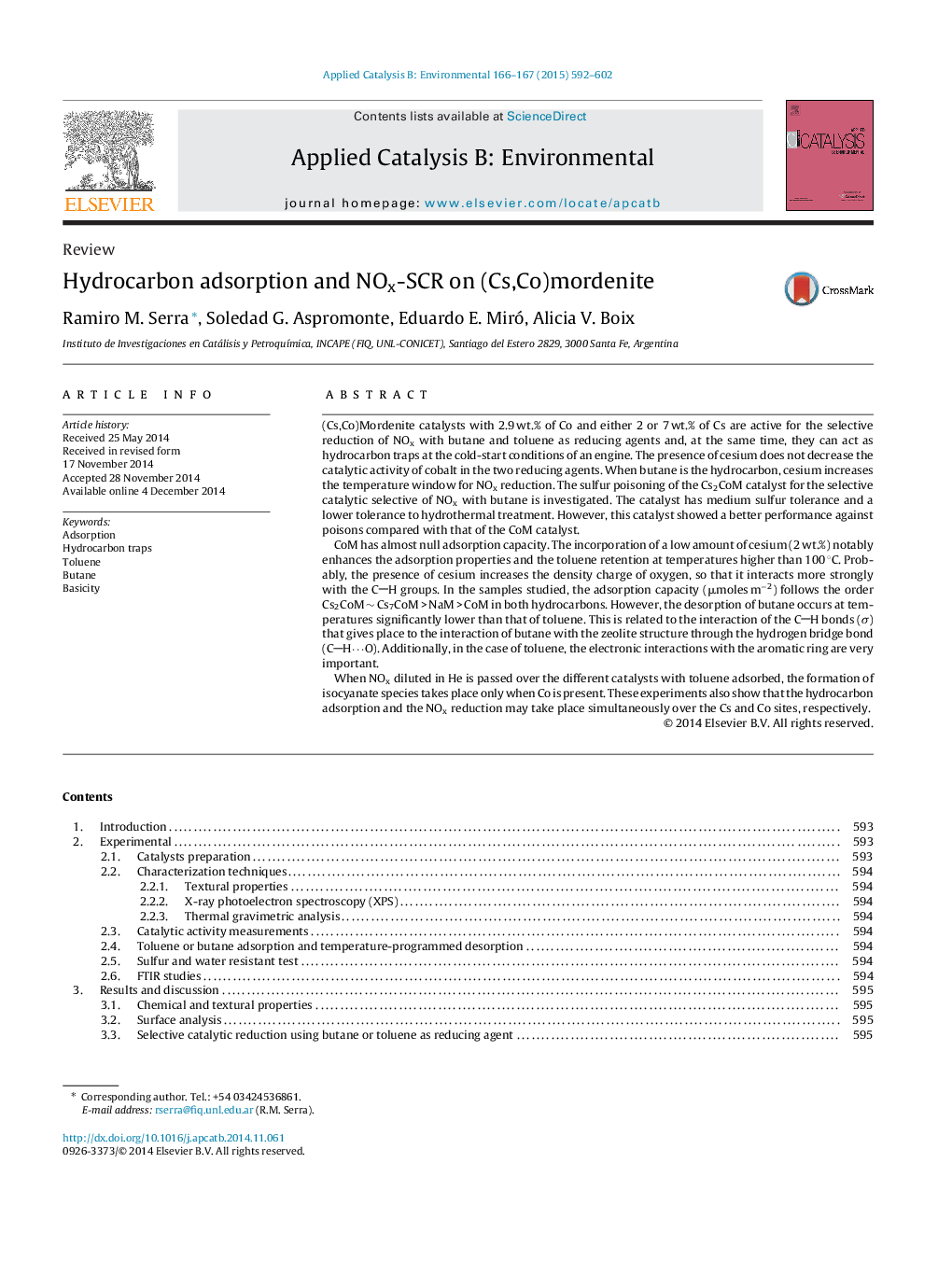| کد مقاله | کد نشریه | سال انتشار | مقاله انگلیسی | نسخه تمام متن |
|---|---|---|---|---|
| 45754 | 46421 | 2015 | 11 صفحه PDF | دانلود رایگان |

• (Cs,Co)Mordenite catalysts are active in the SCR-NOx with toluene or butane.
• The presence of Cs does not change the reducing activity of CoM.
• The CsCoM sample has an optimal performance for the HC trap following by SCR-NOx.
(Cs,Co)Mordenite catalysts with 2.9 wt.% of Co and either 2 or 7 wt.% of Cs are active for the selective reduction of NOx with butane and toluene as reducing agents and, at the same time, they can act as hydrocarbon traps at the cold-start conditions of an engine. The presence of cesium does not decrease the catalytic activity of cobalt in the two reducing agents. When butane is the hydrocarbon, cesium increases the temperature window for NOx reduction. The sulfur poisoning of the Cs2CoM catalyst for the selective catalytic selective of NOx with butane is investigated. The catalyst has medium sulfur tolerance and a lower tolerance to hydrothermal treatment. However, this catalyst showed a better performance against poisons compared with that of the CoM catalyst.CoM has almost null adsorption capacity. The incorporation of a low amount of cesium (2 wt.%) notably enhances the adsorption properties and the toluene retention at temperatures higher than 100 °C. Probably, the presence of cesium increases the density charge of oxygen, so that it interacts more strongly with the CH groups. In the samples studied, the adsorption capacity (μmoles m−2) follows the order Cs2CoM ∼ Cs7CoM > NaM > CoM in both hydrocarbons. However, the desorption of butane occurs at temperatures significantly lower than that of toluene. This is related to the interaction of the CH bonds (σ) that gives place to the interaction of butane with the zeolite structure through the hydrogen bridge bond (CH⋯O). Additionally, in the case of toluene, the electronic interactions with the aromatic ring are very important.When NOx diluted in He is passed over the different catalysts with toluene adsorbed, the formation of isocyanate species takes place only when Co is present. These experiments also show that the hydrocarbon adsorption and the NOx reduction may take place simultaneously over the Cs and Co sites, respectively.
Figure optionsDownload as PowerPoint slide
Journal: Applied Catalysis B: Environmental - Volumes 166–167, May 2015, Pages 592–602